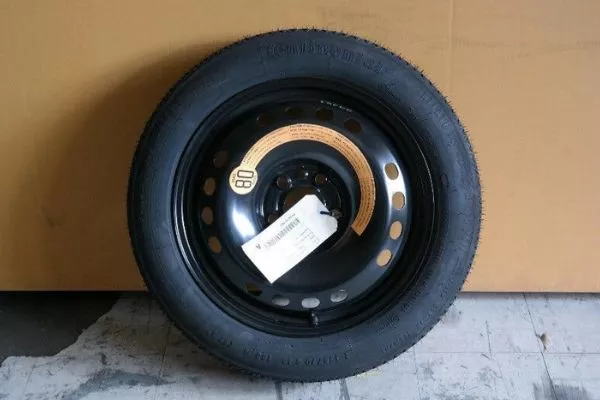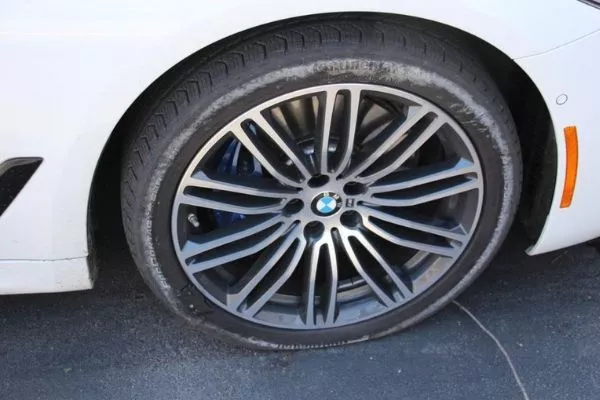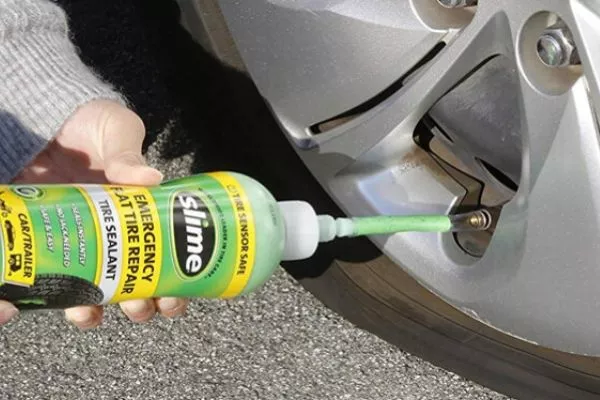Getting a flat is no joke
While most car guys will consider getting a flat tire a normal and inevitable possibility especially when driving on the daily, many others, especially new car owners or automotive beginners will dread it.
For sure it’s a major source of annoyance even for everyone, for veteran car owners and newbies alike.

Sure, getting a flat is bad but it's no crying matter
Getting used to using the jack, loosening the lug-nuts, and replacing the flat with the spare can be learned. But then there’s the question of the spare tire itself because there are actually two types depending on the vehicle you’re driving.
So, what are these two types of spare tires? How are they different and is one better than the other? Let’s find out.
>>> Just in case you need: Driving on a flat tire: Signs, warnings & tricks for Pinoy drivers
Full-size spare tires vs Temporary spare tires
Temporary spare tires
Colloquially known as “donut” tires or “space savers”, these are typically easier to lug around because these are significantly smaller and has less mass than your car’s stock tires. Due to its small size, a donut is also easier to store in a vehicle.
As such, smaller cars from hatchbacks to sedans will come with a donut as a spare. By using less material (rubber) a donut spare tire is also much cheaper than a full-size spare.
There are however some disadvantages and safety considerations when it comes to a temporary spare tire.
For starters, one should never exceed 112 kilometers of drive distance when driving on a donut spare tire.
This is because it is narrower and smaller and thus it won’t last longer than a full-size tire because they have minute amounts of the tread. In connection to this, you should also never exceed 80 km/h when using donuts as these are very vulnerable to road hazards.

"Donuts" or space-saver spares are easier to handle than full-size tires
Another is that you should try your best to avoid quick maneuvers when using a donut spare tire. Because they’re significantly smaller than regular tires, they spin much faster, have a smaller contact patch, and of course will provide lower amounts of grip.
And finally, donut tires are meant to be disposable. If you are certain that you’ve driven on them for more than their rated distance and their tread indicators.
Do check them immediately after having them replaced by your repaired full-size tire and do purchase a replacement. If they’ve exceeded the maximum distance we’ve mentioned before, then don’t use them again and immediately purchase a replacement.
>>> Recommended article: Different spare tire problems that you need to watch out for!
Full-size spare tires
While sedans and hatchbacks today typically carry a smaller, space-saving “donut” spare tire, cars in the past were designed to carry full-size spares.
If, however you’ve bought a larger vehicle, say a pick-up truck, an SUV, or a larger MPV, then there’s a great chance that it comes with a full-size spare.

Full-size tires are heavy and installing them is sometimes a sweaty proposition
In contrast to the donut space savers, a full-size tire is larger and heavier. This makes the act of replacing a spare a potentially sweaty and tiring exercise especially if you’re alone, and/or when you do not have prior experience.
Typically, a full-size tire uses steel wheels. But when you get to a tire repair or “vulcanizing” shop, you can actually request them to remove the steel wheels with the wheels of the flat tire’s wheels. This is especially helpful when your flat tire becomes irreparable.
Note though that a spare tire might have different specifications than you’re other three functioning tires. This creates a change in handling characteristics that might lead to unsafe driving situations.
As such, we suggest that you immediately purchase a replacement with the same specs as your other remaining tires.
>>> Also read: How to survive driving on bald tires?
Some alternatives
Run-flat tires
While we’ve talked about spares. Then imagine avoiding getting a flat in the first place. How? Well with run-flat tires of course!
These are typically thicker and tougher than normal tires and will endure withstanding road hazards better. You can even drive for up to 80 kilometers before needing to be replaced with a spare.
Of course, run-flats will initially cost more and will also cost more to replace but this will save you some money in the long run. Being run-flats, you also save weight because you’ll no longer need to carry a spare.

Run-flat tires on a BMW
>>> More to read: Benefits & drawbacks of tubeless tires, Run-flat tires & self-inflating tires
Flat tire sealant kits
Another alternative to those mentioned above is buying a tire sealant kit and these are typically packaged as a can of the sealant itself along with a pair of gloves.
Of course, these are lighter than full-size spare tires and even donut spare tires. They even take up a significantly smaller amount of space inside your vehicle.
And of course, you no longer need to jack-up a car and muscle your way through your lug-nuts when using a sealant kit.

Tire sealants come in a handy, easy to use a bottle
Flat tire sealant kits, however, do come with some of its own sets of disadvantages.
First, sealant, no matter the brand, cannot address all kinds of punctures. Take for example on a “rolling flat.” These involve multiple punctures caused by the rolling motion of a tire.
This happens when a flat tire was driven on. Another is tire tears which are typically too huge for the sealant to cover. So yes, carrying around a spare whilst having a tire sealant kit is still a good rule of thumb.
>>> FYI: Essential tools needed in a car tool kit for DIY car maintenance
Self-sealing tires
Just like run-flat tires, self-sealing tires will have the ability to be driven on a set limited distance. They can withstand punctures as they have sealant built into their several layers.
Once these get a puncture, the sealant will automatically move towards the said hole. Like the sealant kit, however, self-sealing tires will have its own limitations like when the puncture is too large, or when the damage is a longitudinal tear.

The American-spec Explorer comes with stock self-seal tires
>>> Read more: How to prevent a flat tire - 7 handy tips for Pinoy drivers
Spare tires: Conclusion
No matter your choice of addressing a flat tire, it’s always good to learn the basics; carrying an actual spare tire and replacing it yourself with a jack, a tire iron, and good old elbow grease.
It might be a bit of a hassle at first, but as long as you own and drive cars, this is an invaluable tool. Self-sealing tires and run-flats, of course, are not widely available especially here in the Philippines after all.

Learning to use these as soon as you buy a new car is paramount
For more tips articles like this one, keep reading here on Philkotse.com.
Recent posts
- Tire pressure monitoring system - This is how you know and install it Oct 23, 2020
- Different spare tire problems that you need to watch out for! Nov 30, 2022
- Nitrogen-filled tires: Assess its pros and cons Aug 16, 2022
- Which of Nitrogen Air or Regular Air Tire should you use for you car? Apr 21, 2020
- [Tire safety tips] How to prolong the lifespan of the tire? Apr 21, 2020












